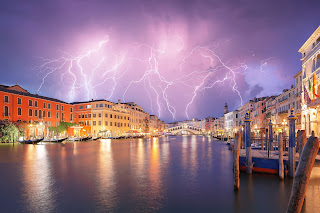An Integrated Approach For Complete Lightning Rod Protection

A lightning rod is a metal rod mounted on a structure and intended to protect the structure from a lightning strike. If lightning hits the structure, it will preferentially strike the rod and be conducted to ground through a wire instead of passing through the structure, where it could start a fire or cause electrocution. Lightning rods are also called finials, air terminals, or strike termination devices. This technology goes back about 250 years to when Benjamin Franklin developed it. It was designed primarily for structural protection. Today, society has evolved to include sophisticated communications, computers, networks, power, power generation, GPS, space travel, air travel, and many more, but many companies are still using a lightning protection unit that goes back to the 1700s. Today’s standards are still rooted in the Ben Franklin system, including the National Fire Protection Agency NFPA 780 and Underwriters Laboratory (UL). Their p...





